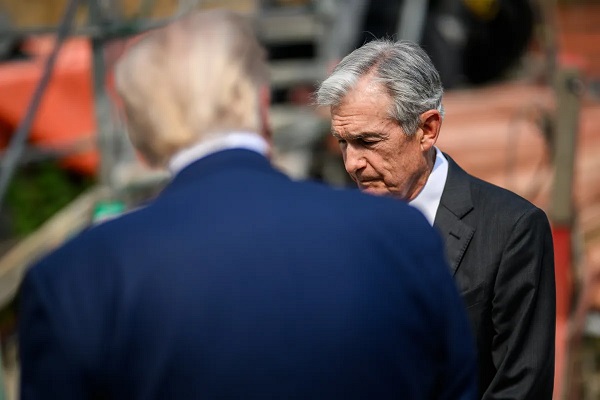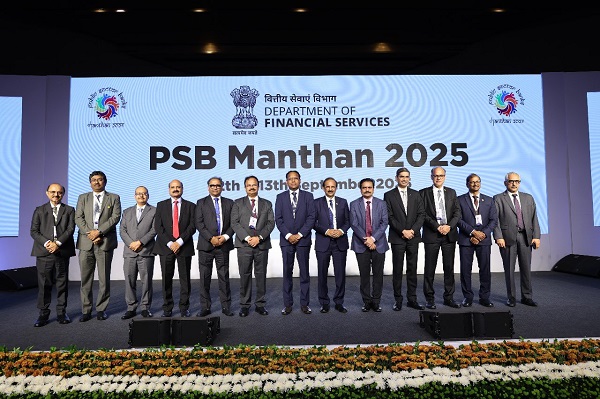.png)
By Yield Scribe
Yield Scribe is a bond trader with a macro lens and a habit of writing between trades. He follows cycles, rates, and the long arc of monetary intent.
September 17, 2025 at 4:29 AM IST
The market accepts that the Federal Reserve needs to be independent. No one in their right mind argues that the Fed should be a servant of the US government’s whims, especially with a volatile leader such as Donald Trump in office.
Perhaps even Trump knows that an independent Fed is in the best interest of the US economy. He is simply taking an extreme position now because, in the past, one might have argued that the Fed was not as independent from the Biden administration as it should have been.
This goes back to 2021, when the Fed began mismanaging inflation. It was 15 months late in launching its tightening cycle and 20 months late in beginning rate cuts after inflation had started to abate. The details of how the Fed fared on inflation control since then are telling.
First, it took four times as long for the Fed to start hiking rates as it had, on average, in prior cycles—20 months compared with the historical average of five months.
Second, in the past, the Fed began cutting rates slightly before the peak in inflation, but this time it waited 18 months before cutting the Fed rate.
Third, inflation peaked in June 2022 and fell sharply until June 2023, but the Fed had just started its hiking cycle in March 2022. Having been surprised by the inflation spike and traumatised by being so far behind the curve, the Fed did not start cutting rates until September 2024. It was six quarters late in cutting.
Fourth, the Fed was behind the inflation curve in 2022–23 and now seems behind the disinflation curve. Rate cuts in the coming quarters make sense. Had it not been for trade tariffs, the Fed rate would already be approaching 3.4% by now, the Fed’s own end-2025 forecast as of September 2024, before the election.
Fifteen quarters after the initial surge in inflation, consumer prices in the historical past averaged about 250 basis points above their starting rate, essentially the same as now. Inflation is no stickier at this point in the cycle.
What is different is the level of the nominal Fed rate. The historical average Fed rate at this stage was 75 basis points above its pre-shock level, compared with the current rate, which is 425 basis points higher. Another way to see this is that when the Fed rate was last above 4.35% in December 2022, inflation was 7.1%. Either the Fed was behind the curve in December 2022, or it is still behind the curve now.
The question is whether this assessment is unfair to Chair Jerome Powell in hindsight.
Powell was only reappointed by President Biden on 22 November 2021, and only days later, in testimony on 30 November to the Senate Banking Committee, did he turn hawkish. At that time, inflation was already 6.8% and rising.
Powell’s challenge was that Governor Lael Brainard, a committed dove and staunch Democrat, was also being considered for the chairmanship. Even if Powell had already turned hawkish in private, he was not in a position to reveal that view for fear of losing reappointment. A Brainard chairmanship would have been even more dovish. The consequence was that action on inflation was delayed by at least six months, fuelling a bigger overshoot than otherwise.
During the COVID years, the Fed effectively coordinated with the Treasury and the White House. Because of this alignment, it escaped criticism from the Biden administration, the media, and academia for having made a huge policy error.
Biden’s fiscal expansion was underwritten by the Fed delaying hikes, resulting in nearly two years when both monetary quantitative easing and fiscal expansion ran in parallel. If Powell’s decision-making then was not influenced by fiscal priorities, how are today’s tariff-driven government decisions any different?
Labour Squeeze
It is convenient to attribute weak payrolls to supply factors, but labour demand is weak too. In uncertain times, why would companies add workers? They will instead optimise labour costs as tariffs squeeze margins. Labour hoarding will soon end as companies let go of workers in response to lower sales and weaker real incomes. The number of unemployed persons per job opening is now close to one, higher than pre-COVID levels.
Inflation for now is not as bad as feared earlier in the year. Much of the tariff shock has been absorbed by foreign exporters and corporate margins. Tariffs mean low growth with low inflation outside the US and low growth with moderate inflation in the US. There are no signs of wage inflation in the monthly payroll data. It is goods inflation that is keeping core PCE elevated, though September core PCE is expected at just 0.2% month on month.
The best gauge of US economic health comes from regional Fed surveys, and almost all are showing weaker growth rather than stronger inflation. The 1.4% GDP growth recorded in the first half of 2025 was almost entirely driven by AI capital expenditure. Without AI spending, growth would have been below 0.4%. And AI capex does not create jobs; it drives productivity gains and reduces employment.
The heavy promotion of AI investment by a few corporate titans in meetings with Trump could soon fade. Equity markets have tolerated the AI boom, but investors will eventually demand returns. A recent MIT study found that 95% of AI projects are currently loss-making.
This means US growth is living on borrowed time from AI capex. With weak employment and lower real incomes, corporate earnings downgrades are only a matter of time. Equity markets and junk bond spreads are notoriously late in recognising economic signals, just as they were during the subprime crisis, when it took six months for the full picture to emerge.
Bond markets are more reliable, and the sharp fall in Treasury yields over the last two months points to a significant probability of recession.
Another complication is the Fed’s silent third mandate of ensuring moderate long-term rates. This view is promoted by Treasury Secretary Scott Bessent and newly appointed Governor Stephen Miran, and it will further constrain policy.
From almost every perspective, Powell’s legacy will be troubling. He was too slow to confront inflation in 2021 and too late to support growth in 2025. This double-sided error will intensify criticism of Fed decision-making and erode its independence. That will be Powell’s true legacy. The Fed is likely to cut rates by 25 basis points tomorrow and guide for another 50 basis points later in 2025, but again it risks staying behind the curve. Do not watch the Fed; watch the employment data, especially the October payrolls due in November.




